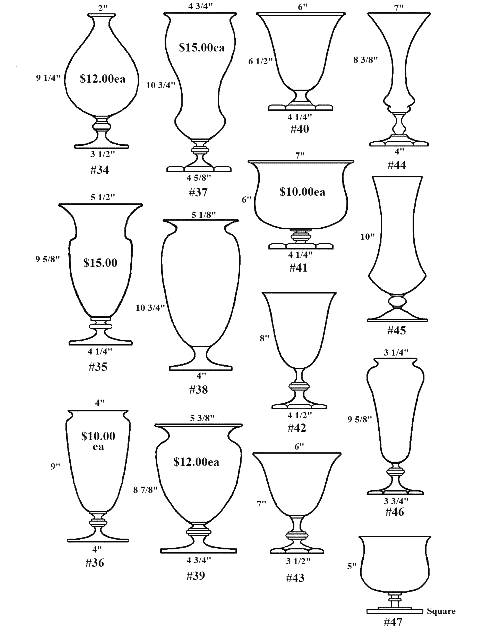Intarsia
Frederick Carder used the term Intarsia in three different ways. The first was to describe a glass that is essentially Verre de Soie decorated with green leaves and vines and called New Intarsia. Vase shapes that were made in New Intarsia are 786 through 793 and shape 801. These shape are probably dated to 1906 or 1907.
The second use of the term Intarsia was to describe a Gold Aurene rim or border that was used on certain vases, bowls and lamp shades. A search of Decorations for Intarsia Collar or Intarsia Border on the Website database will find examples.
The third use of the term is probably the most recognized by collectors today and describes a three layer glass where a colored intermediate layer is placed between two, usually, colorless layers. The colored layer was etched to form leaves and vine, flowers or other decorations. This glass was very difficult to make and only one of his gaffers, Johnny Jansson, was able to perfect the process. Very few pieces were made with estimates of production in the 50 to 100 range. The process for making this type of Intarsia is described in Gardner on pages 74 and 75. Some of these pieces which were all made about 1930 acquired shape number in the normal shape number sequence. Examples are shapes 7051, 7052, 7053 and 7060. The Paul Vickers Gardner Glass Center at Alfred University has two pages of Intarsia shapes that appear to have not used the normal shape numbers. On one sheet the shapes are numbered 1 through 7 and on the second they are numbered 34 through 47. It would appear that one or more sheets are missing that would show other shapes. It is not known if examples of all of these shapes were made.
Intarsia Drawings
This is the first page of Intarsia drawings found at the Paul Vickers Gardner Glass Center at Alfred University.
This is the second page of drawings from the Gardner Glass Center. There are probably one or more pages of drawings missing.

